MP Board Class 9 History Chapter 5 – Pastoralists in the Modern World
MP Board Solutions for Class 9 History Chapter 5 – Pastoralists in the Modern World are essential for understanding lifestyle changes in traditional communities in the MPBSE curriculum. These well-structured answers help students grasp topics like pastoral movement patterns, colonial restrictions, and transformations in India and Africa. Designed as per the latest syllabus, these solutions strengthen conceptual clarity and improve exam preparation. Ideal for revision and practice, they promote cultural understanding and economic awareness, making them a valuable study tool for scoring well in Class 9 Social Science exams.
MP Board Solutions For Class 9 History – Pastoralists in the Modern world – Exercise Images
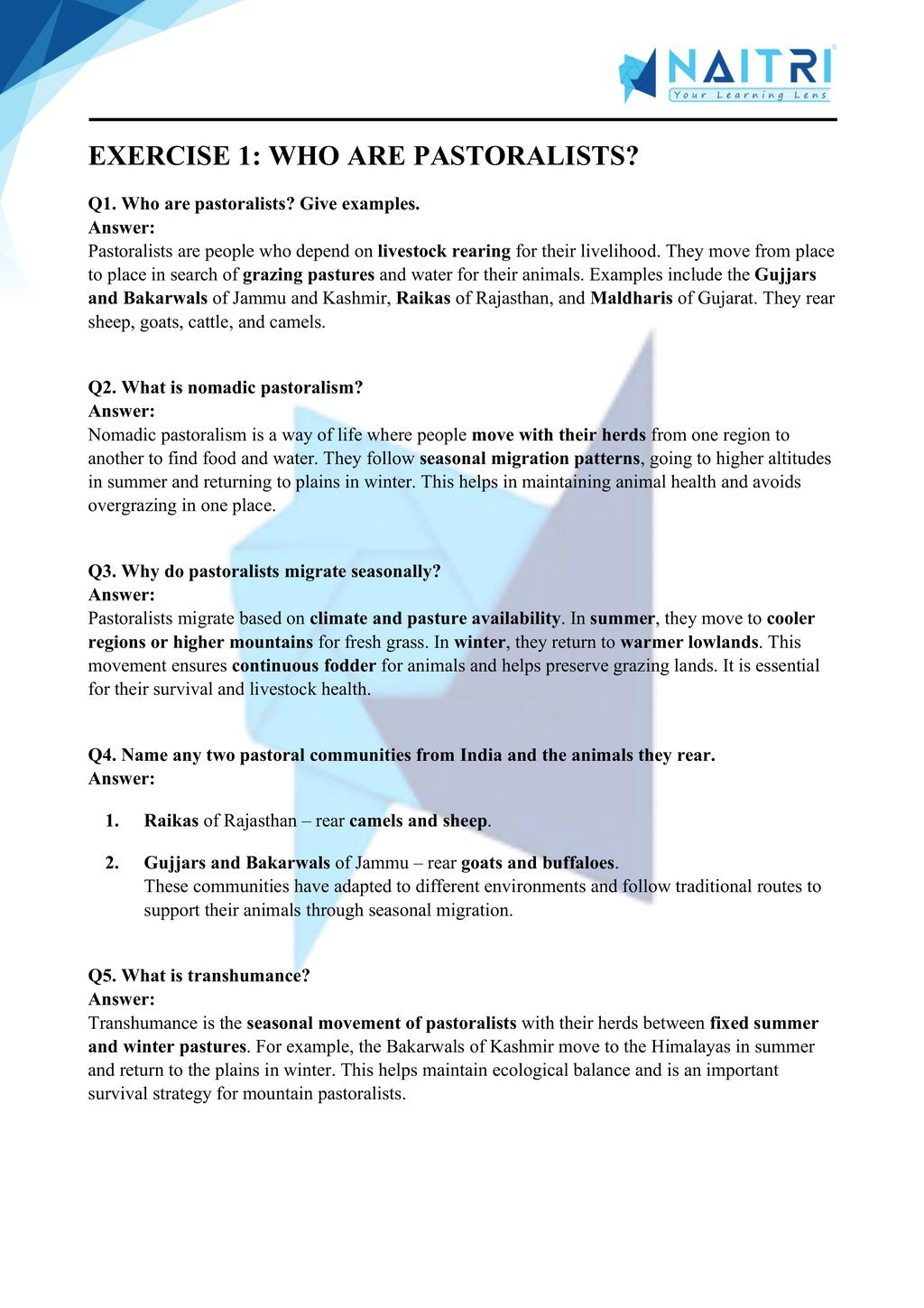
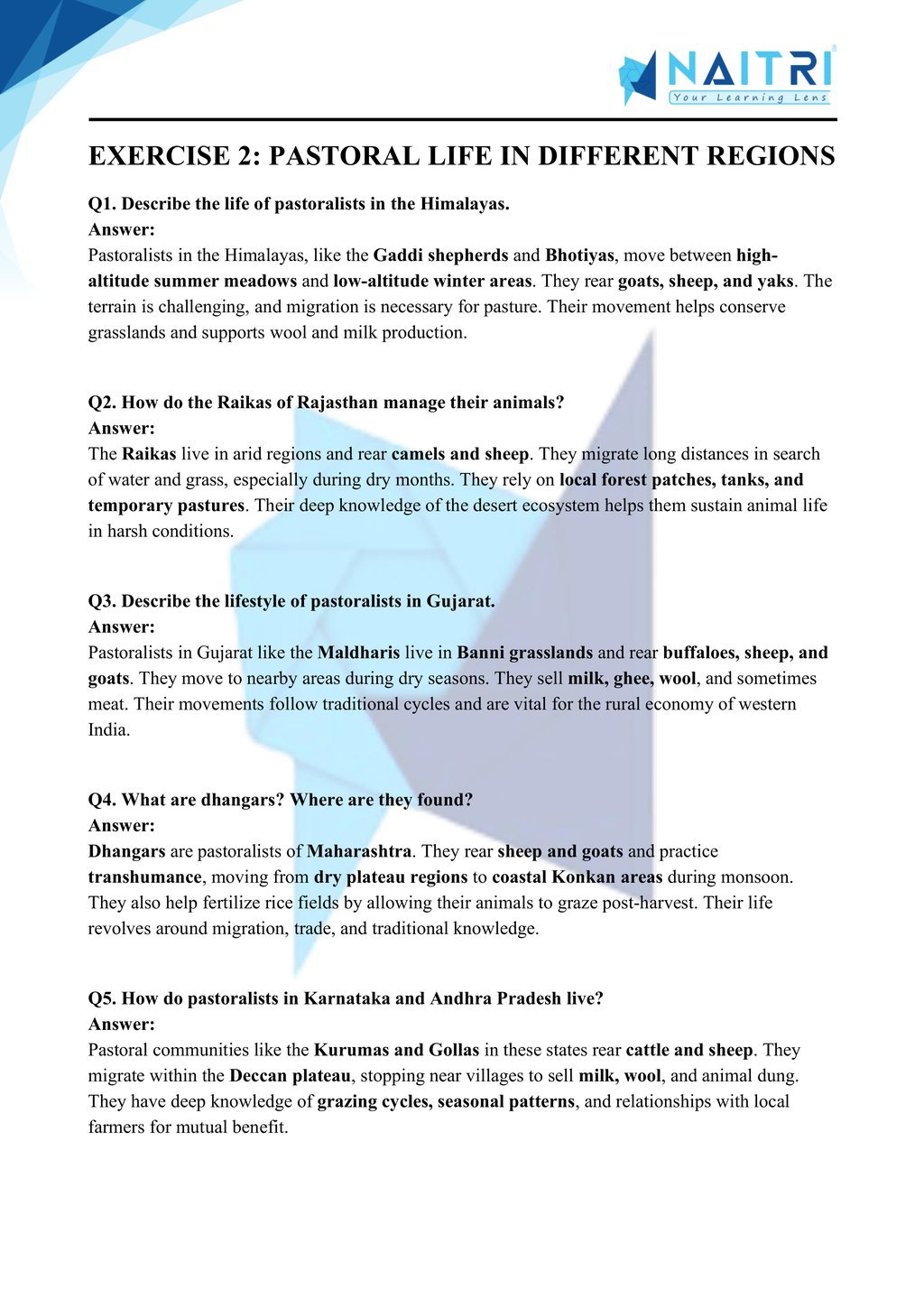
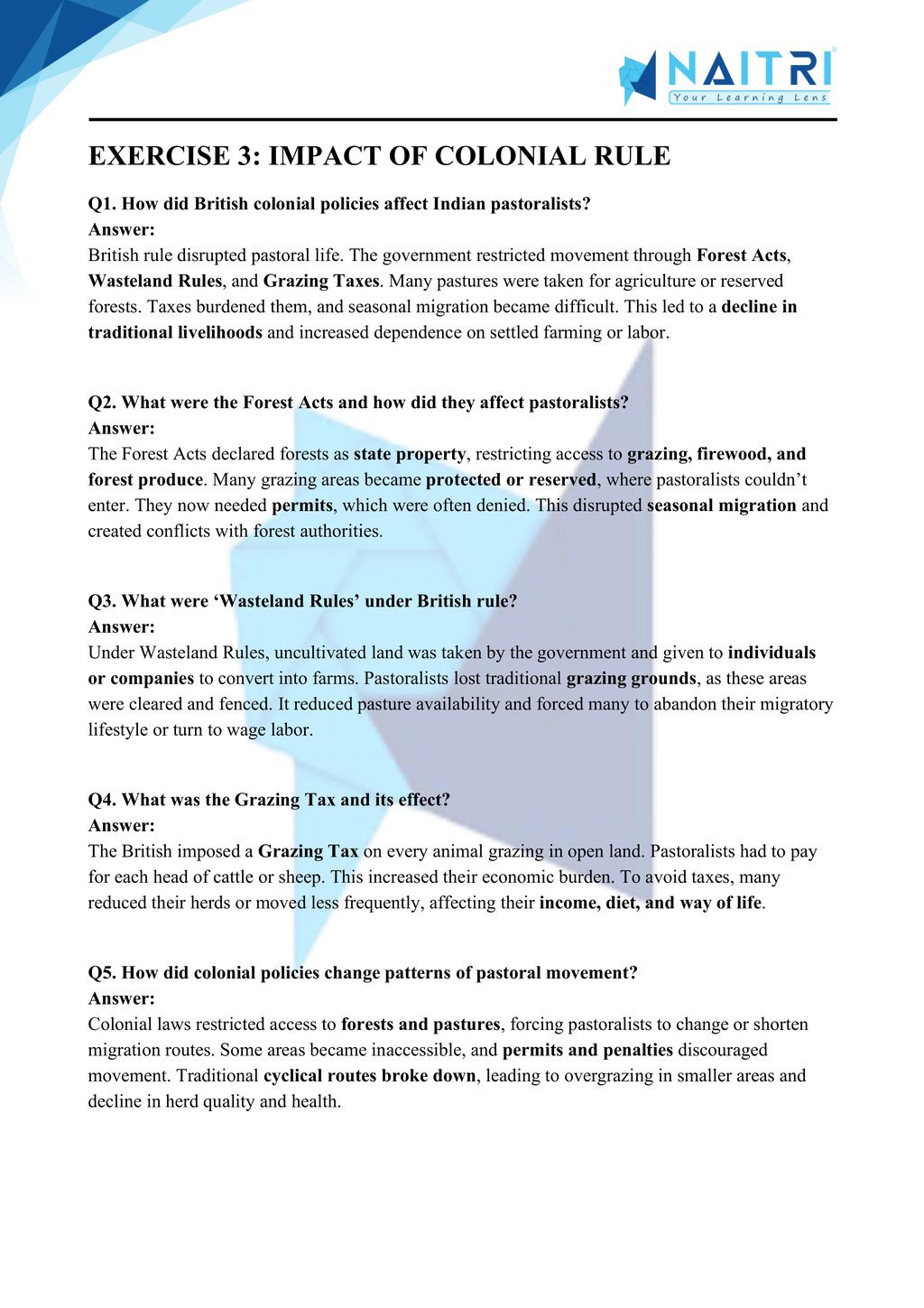
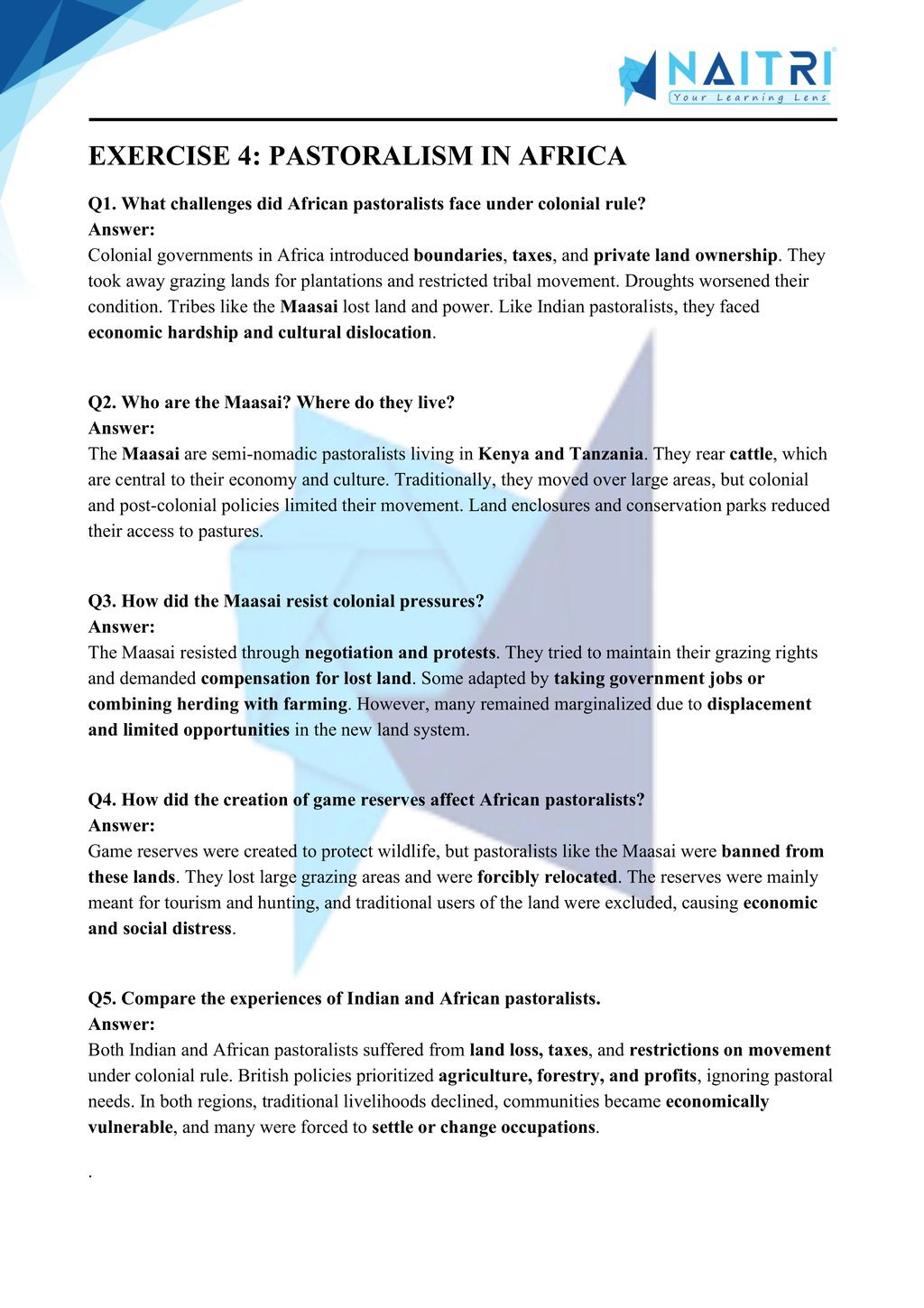
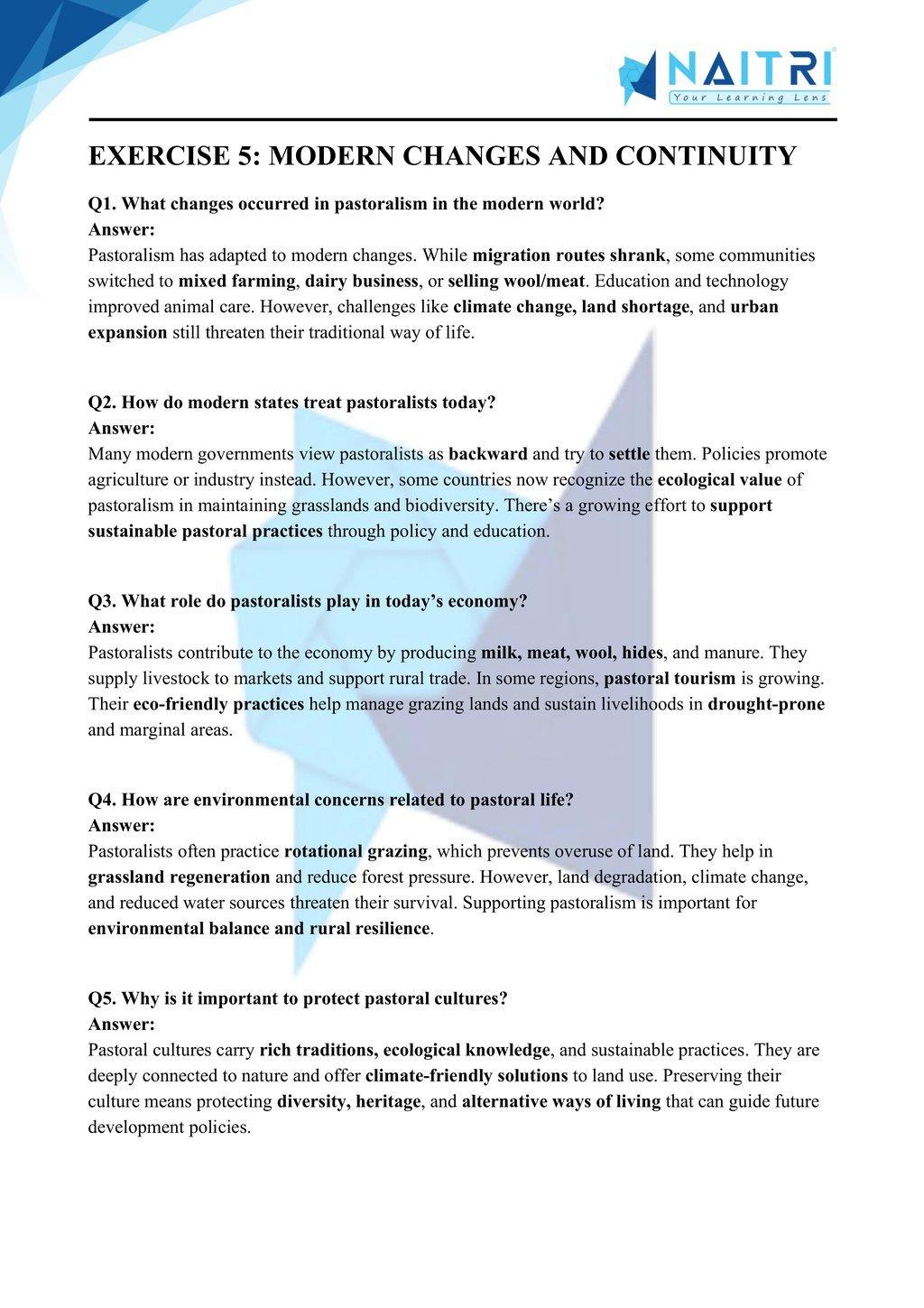
Experience History Like Never Before – With AR!
Understanding Pastoralists in the Modern World is now more exciting and immersive! With the NAITRI App, you can explore complex history concepts through Augmented Reality (AR). See nomadic lives move, grazing lands change, and colonial policies impact communities — right in front of you. Our AR-powered lessons make learning interactive, 3D, and fun, helping you retain concepts better and enjoy every topic.



Visualize . Interact . Understand . The future of learning is here
Pastoralists in the Modern World – Important Questions with Answers
Who are pastoralists?
Answer: Pastoralists are people who depend on livestock herding for livelihood, moving seasonally to access pastures, found in hills, plateaus, and deserts.What is nomadic pastoralism?
Answer: Nomadic pastoralism involves seasonal movement of herders and their animals to graze in different regions, adapting to climate and resource availability.What are Gujjars and Bakarwals?
Answer: Gujjars and Bakarwals are pastoral communities in Jammu and Kashmir, who migrate seasonally with sheep, goats, and cattle.How did colonial rule affect pastoralists?
Answer: British policies restricted movement, imposed grazing taxes, and confiscated grazing lands, forcing pastoralists to settle and abandon traditional lifestyles.What was the Criminal Tribes Act?
Answer: The Criminal Tribes Act (1871) classified nomadic groups as criminals by birth, restricting their movement and increasing surveillance by the state.How did forest laws impact grazing?
Answer: Forest laws banned grazing in reserved forests, leading to conflict with pastoralists, who were denied traditional rights over land and water.What are ‘wastelands’ and how were they used?
Answer: Wastelands were declared uncultivated lands that the British claimed and converted into plantations or sold to landowners, displacing pastoral communities.How did pastoralists adapt to changes?
Answer: Some pastoralists reduced herd sizes, became settled farmers, others migrated to new regions, or took up trading, showing flexibility and resilience.What are Dhangars?
Answer: The Dhangars are a pastoral group from Maharashtra who herded sheep and goats, and practiced seasonal migration between plateaus and coastal areas.What is transhumance?
Answer: Transhumance is a pattern of seasonal movement between mountain and lowland pastures, common among Gaddi shepherds and Gujjars.How were grazing taxes collected?
Answer: Grazing taxes were collected per head of animal, burdening pastoralists and acting as a tool to control mobility and income.What happened to Maasai pastoralists in Africa?
Answer: The Maasai lost land to colonial settlers, faced restrictions, and were pushed into reserves, leading to a loss of autonomy.Why did the British restrict nomadic life?
Answer: The British saw nomadism as chaotic, preferring settled agriculture for tax collection and land control, enforcing laws against free movement.How did railways affect pastoral routes?
Answer: Railways disrupted traditional routes, reduced the need for cattle transport, and contributed to decline in pastoral economy.What is the difference between settled agriculture and pastoralism?
Answer: Settled agriculture is land-based and static, while pastoralism involves mobility, use of common pastures, and reliance on livestock.Why were pastures degraded?
Answer: Commercial farming, forest laws, and overgrazing reduced pasture quality, making it difficult for herders to maintain large herds.How did education affect pastoralists?
Answer: Education policies ignored pastoral needs. Schools were static, unsuitable for mobile communities, leading to exclusion from mainstream education.What role do women play in pastoral life?
Answer: Pastoral women manage milk production, animal care, and household work, playing a vital role in the economy and family.What was the outcome of British land policies?
Answer: British land policies reduced common land access, increased settler control, and changed land use patterns, harming traditional pastoral practices.How are pastoralists important today?
Answer: Pastoralists provide meat, milk, and maintain biodiversity, playing a key role in sustainable land use in dry and mountainous regions.Why did pastoralists resist colonial policies?
Answer: They resisted due to loss of land, mobility, and livelihood, organizing rebellions, petitions, and informal resistance across India and Africa.What was the outcome of these resistances?
Answer: Though many resistances failed, they preserved cultural identity, forced policy reconsiderations, and highlighted the impact of colonial exploitation.How were pastoralists classified under colonialism?
Answer: They were classified as ‘backward’ and ‘uncivilized’, to justify control, land seizure, and settlement programs under British rule.What were reserve areas in Africa?
Answer: Reserves were limited lands assigned to groups like Maasai, where grazing and movement were restricted, leading to overcrowding and resource depletion.What is the future of pastoralism?
Answer: Despite challenges, pastoralism continues as a resilient livelihood, adapting to climate change, supporting biodiversity, and needing better policy support and recognition.
Pastoralists in the Modern World focuses on nomadic and semi-nomadic communities who depend on livestock and seasonal migration for livelihood. The chapter shows how colonial and modern policies disrupted their movement and economy in India and Africa. It emphasizes adaptation, resistance, and survival in the face of changing political and economic pressures. This chapter builds empathy and understanding of lesser-known communities often left out of mainstream narratives.
Download Naitri App
Easy, Visual Learning — Right on Your Phone
Learn with Augmented Reality! The Naitri app makes CBSE and MP Board concepts interactive and fun — even in low-resource settings. Watch lessons, complete homework, take tests, and track progress — all in one place. Anytime. Anywhere.
Available on








